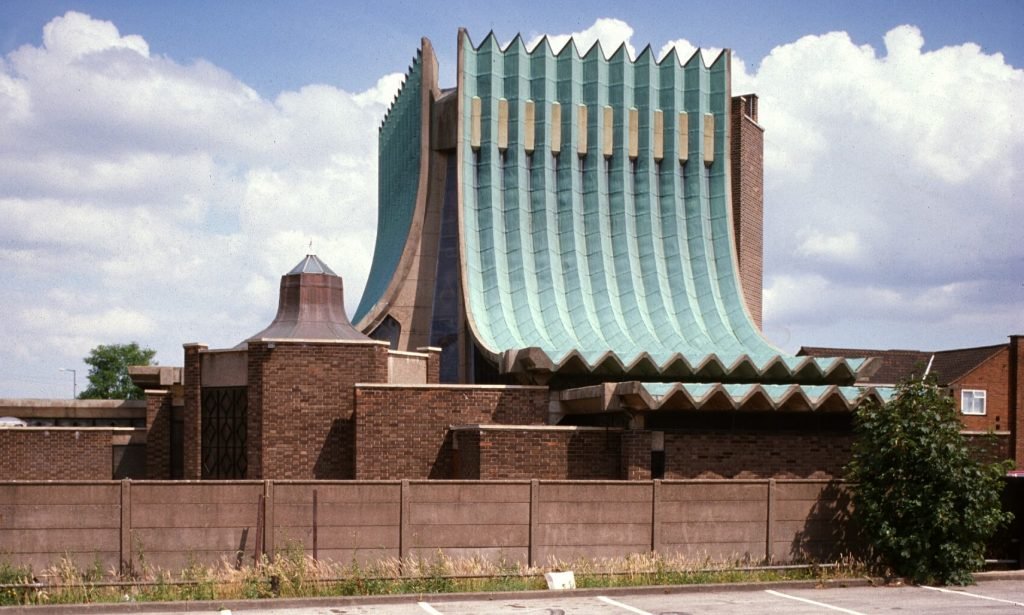Our Lady Help of Christians Church, Birmingham
Our Lady Help of Christians Church, Tile Cross, Birmingham
In the 1960s, the Second Vatican Council demanded a radical rethink of the planning of Roman Catholic churches and resulted in some remarkable and innovative buildings. Two notable examples are in Birmingham, the work of Richard Gilbert Scott, the architect son of Sir Giles Gilbert Scott whose practice he continued. The commissions for the Birmingham churches, however, were inherited from Adrian Gilbert Scott, his uncle. Scott was given a free hand by the Archbishop, as long as the buildings were cheap. That at Tile Cross was the architect’s favourite of the two (the other is at Sheldon). A subtly polygonal T-shaped plan allowed a forward altar surrounded by seating. Above this, the roof is partly formed by extraordinary curved serrated ribbed trusses of reinforced concrete faced externally in copper – a dramatic, theatrical treatment which suggests both a delight in expressive, sculptural forms and a desire to continue with the modern Gothic spirit which the architect’s father had done so much to sustain. Inside, the spaces left between the concrete frame are filled with remarkably good stained glass by John Chrestien. This is one of the most successful of modern Roman Catholic churches in England.

